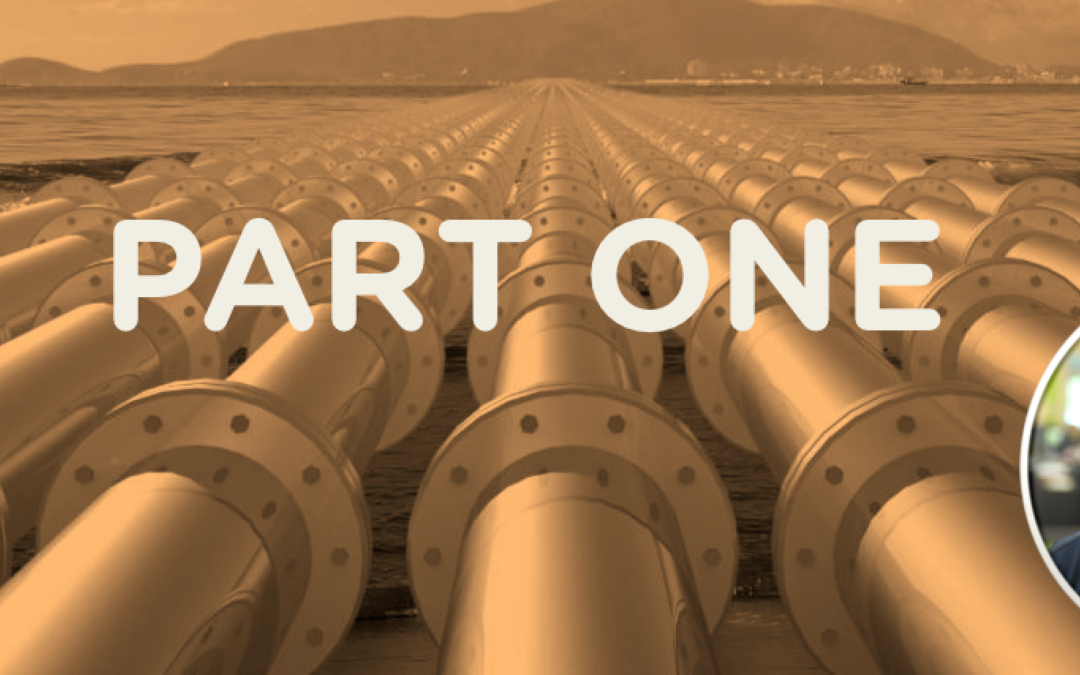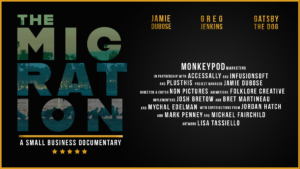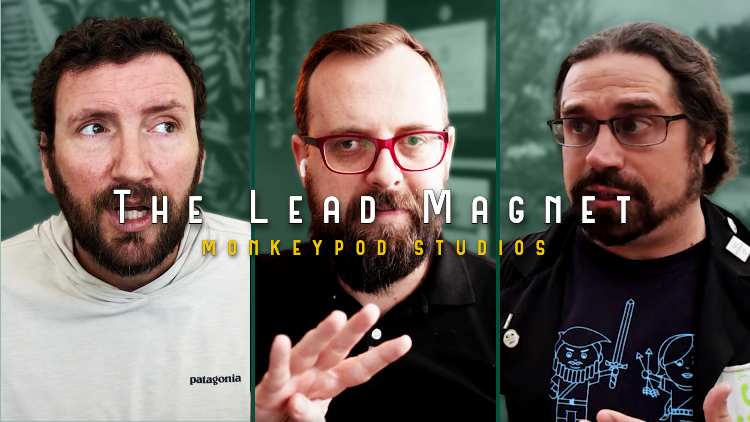The original Campaign Builder Mad Scientist is back again to drop some knowledge on us all. You guys may know Paul from past hits such as Infusionsoft for Non-profits, 5 Massively Underused Infusionsoft Features or as the author of the IS Cookbook. Regardless, he’s back, and has pulled some more wisdom out from under his glorious hair. Enjoy.
3 Species of Pipeline and How To Leverage Automated Experiences
Ahoy hoy Monkeypodders! Its your favorite mad scientist and automated experience authority Paul Sokol with another guest post that, hopefully, you’ll be able to use in your business somehow. Infusionsoft user or not.
So here’s the scoop: in most businesses there is usually a long drawn out process of some kind. Now, this process may not be technically difficult but rather it simply takes time. For example, if you are providing construction services it takes time to get permits and inspections and such. To ensure smooth operations and governance over the process’ integrity, a pipeline can keep everything organized like a well-oiled machine. More on that in a second though.
A process that would warrant a pipeline can exist during the customer acquisition phase, during post-sale fulfillment or the product itself can warrant its own pipeline. In this blog post, my goal is to share more insight into these three kinds of pipelines I’ve seen in the wild (and personally used) and how you might be able to leverage humanized automation to intentionally create a delightful customer experience.
This is not to say that more species of pipeline don’t exist. To say that would be ignorant. Even in the real world we are discovering new species of life at exponential rates. Who knows, maybe in the future if I encounter a fourth distinct type of pipeline you’ll get another guest post 😉
 Before we begin I need to briefly explain the notion of a pipeline because there are some different definitions out there. I personally use the word (and thus how it should be interpreted when reading this post) as a way to describe a manual accountability tool whereas someone can track an individual customer relationship through a clearly defined process with a defined outcome.
Before we begin I need to briefly explain the notion of a pipeline because there are some different definitions out there. I personally use the word (and thus how it should be interpreted when reading this post) as a way to describe a manual accountability tool whereas someone can track an individual customer relationship through a clearly defined process with a defined outcome.
I know that sounds wordy. Let me clarify a bit.
A process is nothing more than a series of steps in a specific order to achieve some outcome.
Steps and Order. There are certain steps you take when getting out of the shower in a specific order to prepare yourself for public appearance. You don’t get out of the shower, get dressed, and then dry off. Process = Steps in a specific Order.
A pipeline is a mechanism to track a process at a scale. The lone solopreneur might be able to keep 3 or so sales leads together in their head, but good luck juggling 50 active leads. The process only works in their head to a point.
Lastly, for a pipeline to work the process it is scaling has to be clearly defined. You can’t build a pipeline for a process that doesn’t exist.
Species #1: Sales Pipeline
 Selling a house takes time. Selling someone a $25K mastermind might take a long conversation with multiple touch points. Selling someone a $5k/month consulting retainer absolutely takes a longer more involved conversation.
Selling a house takes time. Selling someone a $25K mastermind might take a long conversation with multiple touch points. Selling someone a $5k/month consulting retainer absolutely takes a longer more involved conversation.
When it comes to offers that have either a high ticket price (with respect to the target market’s perception of price) or something that has a long buying cycle, a sales pipeline can be very handy.
As far as the sales process, the pipeline is tracking the key milestones in the relationship. Here are the recommended pipeline stages for the beginning of any sales process.
New Opportunity – The contact has been identified as someone we should call, that’s it. No action has actually occurred.
Contacting – The sales rep has made at least one attempt to get a voice-to-voice conversation and has not reached them yet.
Engaging – The sales rep has made contact but has not yet identified if the lead is qualified to proceed further down the sales process.
Qualified – The sales rep has verified the contact has a real problem, budget and the authority to spend the budget.
Once someone is qualified, there are usually only a few milestones after that, based on how you sell. They usually happen in pairs too. For example, “Demo Scheduled” and “Demo Completed”. Or “Proposal Sent” and “Proposal Accepted”.
As a general guideline, your sales pipeline should only have 6-8 distinct stages besides the Won/Loss stages at the end of the process. This also ensures that your people will be able to easily use the pipeline without getting confused.
Regarding automation, you’ll want to use it to supplement what the sales rep should already be doing anyway.
For example, if a lead is in the Contacting milestone, there can be a series of emails from the sales rep that basically says “Hey I’m still trying to reach you”. Or, if you have a “Proposal Sent” milestone that might be a series of emails that says “Hey what’d you think?”
Bonus Super Ninja Tactic: “Invisible Sales Manager”
The “Invisible Sales Manager” is an excellent way to keep track of sales reps and their performance. It also really begins to paint the picture for how powerful good automation can actually be.
Here is how it works: For each sales milestone, have a timer that waits until long after the next milestone should have happened. For example, someone shouldn’t be in Contacting for more than about a week. You can set a timer for one month and, if they are still at that point in the process, have the system apply some note and notify the sales manager that the lead has been stale for a month. Now, there is documentation of the occurrence (in case this is a recurring problem with a particular rep; you now have hard evidence) and the sales manager knows they need to have a conversation.
This post got a little longer than expected, so we’ll bring you the 2nd and 3rd species in a day or two.






